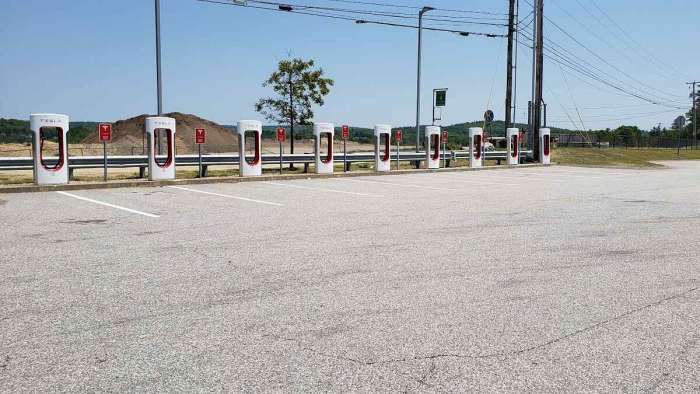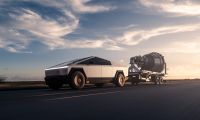Ask any EV shopper what their largest concern or worry about moving to an EV is, and they will most likely reply, “Charging.” They are not wrong that charging can be a hassle, particularly when compared to the tried and true method of shoving liquid sunshine into a car via a universal one-size-everywhere gas nozzle. The news this week is that Ford has opted out of the standard most folks assumed would eventually become the standard EV charging port and is moving to follow another manufacturer’s custom method.
Related Story: Electric Vehicle Charging Is a Confusing Mess For New EV Owners
When charging in public, such as on a road trip, the only reasonable way to put meaningful miles into the battery while you wait is DC fast charging. Level 2 charging is OK for at-home charging overnight, but Level 2 EV charging is entirely a waste of one’s time when traveling. In America today, you can buy a new 2023 model-year electric vehicle with three different ports for DC fast charging. Tesla’s four models use Tesla’s own proprietary method. Almost all the dozens of other EV models sold in America in 2023 use what is called the Combined Charging System (CCS). The 2023 Nissan Leaf and the 2023 Mitsubishi Outlander use the CHAdeMO system, popular globally but not in America.
The Nissan Leaf, first delivered to US owners in December of 2010, was the first battery-electric vehicle sold in America in any volume, and it beat Tesla’s Model S to market by years. The Leaf was, for a long time, the top-selling EV sold in America, and is among the top few affordable EVs ever sold here. Nissan’s Leaf is among the top-selling used EVs in America today since so many have been sold over the two decades it has been available. And yet, America pretty much ignored all of this and did not adopt the DC fast charging standard that the world and Nissan opted for.
Instead of opting for what the early leader went with, America went down the path of the CCS standard. Volkswagen, Chevrolet, Cadillac, Hummer, Hyundai, Kia, Genesis, Subaru, Toyota, Ford, Volvo, Mercedes, BMW, Porsche, Audi, and others presently sell EVs that all use CCS. The problem is that Tesla has come to be the sales volume leader since all the other automakers only sell token volumes of EVs. Tesla is all in. and you know what? Tesla’s method is actually the best method. It is the sleekest, and consumers love it.

Tesla’s method is so good, Ford’s CEO just had lunch with Elon Musk and decided to start using Tesla’s charging standard. Never mind that all of Ford’s many models thus far used CCS. Good for Ford! After all, only Tesla has a DC charging network that people who own EVs love to brag about. Tesla’s investors and customers paid bajillions of dollars to develop the Tesla Supercharger network, and now it is widely considered the best way to charge an EV away from home. Using a Tesla Supercharger is crazy expensive. Folks who use it pay more per mile for energy than Prius owners do, and in some cases, even more than conventional gas vehicle owners pay per mile for fuel. But it is fast, reliable, and the chargers are in places that make sense. Tesla even fixes the chargers when they break. What a concept!
Now that Ford, the number two EV maker measured by recent delivery volumes, has decided to buddy up with Tesla, the top two EV producers will be using one standard, and everyone else, will use CCS. Even Nissan uses CCS now, having quit on CHAdeMO for its new $63K Ariya EV.
America goes forth with a booming EV adapter industry forming to help EV owners use the other standard when they arrive at the wrong one, and their vehicle is incompatible. It’s hard to see how one standard ends up being the sole survivor in the coming years. Instead, the worst part of owning an EV just became even more entrenched in hassles.
Image of Kia EV6 GT CCS charging port by John Goreham. Image of Ford Superchargers by John Goreham.
John Goreham is an experienced New England Motor Press Association member and expert vehicle tester. John completed an engineering program with a focus on electric vehicles, followed by two decades of work in high-tech, biopharma, and the automotive supply chain before becoming a news contributor. In addition to his eleven years of work at Torque News, John has published thousands of articles and reviews at American news outlets. He is known for offering unfiltered opinions on vehicle topics. You can follow John on Twitter, and TikTok @ToknCars, and view his credentials at Linkedin












